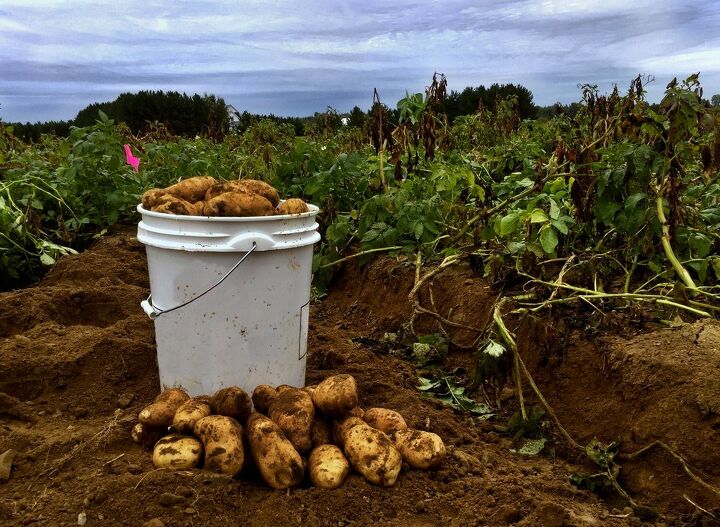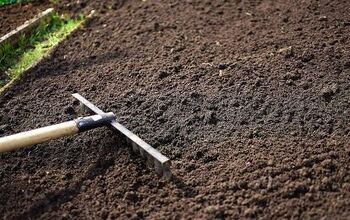How Many Cubic Feet in a Five Gallon Bucket?

volume = π × r2 × h
The volume of a cylinder in cubic feet is equal to π times the radius in feet squared times the height in feet.
Keep in mind that, π is roughly equal to 3.14159265359.
Now, let’s put all of this together to solve for the cubic footage of a five-gallon bucket. You’ll recall the standard measurements being a height of 15 inches and a radius of 6 inches.
volume = π × 62 × 15
volume = 3.14159265359 × 36 × 15
volume = 1695.6 cu inches
However, we’re not done here. If you noticed, the measurement we ended up with is in cubic inches. Now, we need to convert the cubic inches to cubic feet. There are 1728 cubic inches in a cubic foot. Your calculations will go as follows.
1 cubic foot = 1728 cubic inches
1695.6 cu inches ÷ 1728 cu inches
volume of a five-gallon bucket = 0.98 cu feet
Five-Gallon Bucket Use Ideas
The five-gallon bucket is an incredibly versatile piece of equipment. Coupled with its affordability, the amount of uses for it are numerous. Here are just some of the common and maybe not so conventional uses for a five-gallon bucket:
- Kitchen compost pail – Using a five-gallon bucket with a lid to store your compost can help lock in the smell and make it easy to transport.
- Bulk food storage – As long as they’re food grade, five-gallon buckets can be used to store bulk food such as flour, pasta, rice and other grains.
- Grow tomatoes upside-down – Cut a hole in the bottom of your bucket, hang it against a fence and fill it with growing medium. Your tomatoes can then be placed right inside and grow outwards from the base.
- Hauling materials for yardwork – Probably the most common use, your five-gallon bucket can be used to haul sand, soil and other materials for yard or garden work.
- Marinating meat – As long as your bucket is food grade or you purchase a liner, it can be used to marinate meat, fish and poultry.
This just scratches the surface on the endless uses for a five-gallon bucket. A quick internet search will turn up countless others.
Related Questions
How do I calculate how much dirt I need?
To determine how much soil you need for your project, you need to calculate the volume needed. Start by finding out the width and the length of the area you will be covering in dirt. Then, multiply these two numbers together to get the area.Next, you need to find out the depth, or thickness, of the layer of topsoil. Finally, multiply the thickness of the topsoil by the area to obtain the volume. The volume of dirt that you need will be equal to this final number.
How many gallons is 2 cubic feet of soil?
To determine how many gallons are in 2 cubic feet of soil you need to perform a simple conversion. Since there are roughly 7.48051948 gallons in 1 cubic foot. Multiply this number by the cubic foot value to determine how many gallons. Therefore, when you multiply 7.48051948 by 2 you get approximately 14.96 gallons.
Wrapping it Up
Five-gallon buckets are likely the most common container used around the home. In order to get proper use out of it, it’s important that you understand its volume and the amount of material you can fit inside it.
However, you cannot simply convert gallons to cubic feet in order to obtain the volume. By using the formula for the volume of a cylinder, you’ll arrive at the fact that there are 0.98 cubic feet in a standard five-gallon bucket.
Undoubtedly, five-gallon buckets are one of the best ways to haul materials but if you’re looking for more information on the subject, check out: “ What’s The Cheapest Way to Move Dirt?”
Related Guides

Jessica considers herself a home improvement and design enthusiast. She grew up surrounded by constant home improvement projects and owes most of what she knows to helping her dad renovate her childhood home. Being a Los Angeles resident, Jessica spends a lot of her time looking for her next DIY project and sharing her love for home design.
More by Jessica Stone














![10 Best Electric Lawn Mowers - [2022 Reviews & Top Rated Models]](https://cdn-fastly.upgradedhome.com/media/2023/07/31/9070486/10-best-electric-lawn-mowers-2022-reviews-top-rated-models.jpg?size=350x220)












